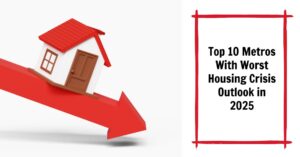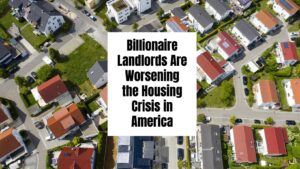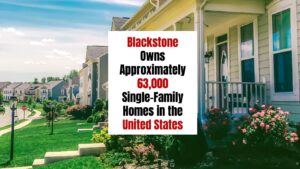Dreaming of owning a home? You're not alone! It's a goal for so many of us. But let's face it, saving up a down payment feels like climbing Mount Everest, especially with today's prices and interest rates. So, how long does it REALLY take to save for a home in each state? The answer, according to a recent study, varies wildly from just over a year to nearly three decades! This article gives an in-depth state-wise timeline for how long it takes to save for a home in each state, giving you a practical snapshot of what to expect.
How Long Does It Take to Save for a Home in Each State?
The Ever-Elusive American Dream: Homeownership Today
Buying a home isn't just about the down payment anymore. It's about battling sky-high closing costs, building a safety net for unexpected repairs, and keeping pace with property taxes, insurance, and those HOA fees that always seem to creep up. It's a marathon, not a sprint.
I remember when my parents bought their first house. It felt like a huge accomplishment, a real step towards building a future. Today, I see friends of mine struggling. They earn decent salaries, but the dream of owning a home feels more like a distant fantasy than a tangible goal. This article uses recent data to give you a realistic view of the saving timeline across the US.
The Study Says: Prepare for a Long Haul (in Some States!)
Leave The Key Homebuyers recently crunched the numbers, using data from the Bureau of Economic Analysis and the U.S. Census Bureau. Their findings paint a sobering picture of just how difficult it is to achieve homeownership, especially in certain states.
They looked at median home prices, average incomes, and the general cost of living to determine how long it would take the average earner in each state to save enough for a down payment.
The Big Reveal: Saving Time by State – Find Yours!
Alright, let's get to the heart of the matter. Here's a breakdown of how long it takes to save for a home in each state, according to the study. Note that this data reflects savings for a 10% down payment. (Saving less is possible, but these numbers give a good sense of comparison)
| Rank | State | Median House Value (2023) | Avg Monthly Income | Cost of Deposit | Time needed to work to afford deposit |
|---|---|---|---|---|---|
| 1 | Hawaii | $846,400 | $4,857 | $84,640 | 28y 10m |
| 2 | California | $725,800 | $5,762 | $72,580 | 10y 6m |
| 3 | Utah | $517,700 | $4,670 | $51,770 | 8y 5m |
| 4 | Arizona | $411,200 | $4,691 | $41,120 | 8y 4m |
| 5 | Georgia | $323,000 | $4,407 | $32,300 | 7y 6m |
| 6 | Oregon | $484,800 | $4,886 | $48,480 | 7y 6m |
| 7 | Florida | $381,000 | $5,081 | $38,100 | 7y 1m |
| 8 | Nevada | $441,100 | $4,880 | $44,110 | 6y 7m |
| 9 | Idaho | $428,600 | $4,414 | $42,860 | 6y 2m |
| 10 | Delaware | $359,700 | $4,899 | $35,970 | 6y 2m |
| 11 | Colorado | $550,300 | $5,848 | $55,030 | 5y 9m |
| 12 | Rhode Island | $411,800 | $4,985 | $41,180 | 5y 6m |
| 13 | Washington | $576,000 | $5,935 | $57,600 | 5y 5m |
| 14 | Massachusetts | $570,800 | $6,342 | $57,080 | 5y 3m |
| 15 | Montana | $392,300 | $4,758 | $39,230 | 5y 1m |
| 16 | North Carolina | $308,600 | $4,583 | $30,860 | 4y 12m |
| 17 | South Carolina | $272,900 | $4,273 | $27,290 | 4y 10m |
| 18 | Maryland | $413,600 | $5,390 | $41,360 | 4y 10m |
| 19 | New York | $420,200 | $5,703 | $42,020 | 4y 10m |
| 20 | New Jersey | $461,000 | $5,931 | $46,100 | 4y 10m |
| 21 | Maine | $310,700 | $4,843 | $31,070 | 4y 8m |
| 22 | New Hampshire | $415,400 | $5,818 | $41,540 | 4y 7m |
| 23 | Vermont | $332,000 | $4,955 | $33,200 | 4y 6m |
| 24 | New Mexico | $256,300 | $4,164 | $25,630 | 4y 4m |
| 25 | Virginia | $382,900 | $5,376 | $38,290 | 4y 3m |
| 26 | Alaska | $347,500 | $5,495 | $34,750 | 4y 0m |
| 27 | Tennessee | $307,300 | $4,745 | $30,730 | 3y 11m |
| 28 | Kentucky | $211,800 | $4,145 | $21,180 | 3y 10m |
| 29 | Texas | $296,900 | $5,012 | $29,690 | 3y 9m |
| 30 | Alabama | $216,600 | $4,079 | $21,660 | 3y 6m |
| 31 | Michigan | $236,100 | $4,551 | $23,610 | 3y 6m |
| 32 | West Virginia | $163,700 | $4,006 | $16,370 | 3y 5m |
| 33 | Louisiana | $215,600 | $4,469 | $21,560 | 3y 4m |
| 34 | Minnesota | $328,600 | $5,271 | $32,860 | 3y 4m |
| 35 | Indiana | $225,900 | $4,560 | $22,590 | 3y 3m |
| 36 | Mississippi | $169,800 | $3,817 | $16,980 | 3y 3m |
| 37 | Wisconsin | $272,500 | $4,819 | $27,250 | 3y 3m |
| 38 | Missouri | $233,600 | $4,661 | $23,360 | 3y 2m |
| 39 | Pennsylvania | $259,900 | $5,068 | $25,990 | 3y 2m |
| 40 | Ohio | $220,200 | $4,576 | $22,020 | 2y 11m |
| 41 | Connecticut | $367,800 | $6,343 | $36,780 | 2y 10m |
| 42 | Illinois | $263,300 | $5,252 | $26,330 | 2y 10m |
| 43 | Arkansas | $195,700 | $4,357 | $19,570 | 2y 5m |
| 44 | Kansas | $219,800 | $4,925 | $21,980 | 2y 5m |
| 45 | Oklahoma | $208,600 | $4,622 | $20,860 | 2y 4m |
| 46 | Iowa | $213,300 | $4,713 | $21,330 | 2y 4m |
| 47 | Nebraska | $245,200 | $5,351 | $24,520 | 2y 1m |
| 48 | North Dakota | $246,700 | $5,437 | $24,670 | 2y 1m |
| 49 | South Dakota | $268,200 | $5,551 | $26,820 | 1y 12m |
| 50 | Wyoming | $298,700 | $6,058 | $29,870 | 1y 11m |
Key Takeaways: The Good, the Bad, and the Expensive
- Hawaii: The Land of “Forever Saving.” Clocking in at 28 years and 10 months, Hawaii is, unfortunately, the place where the dream of homeownership may feel like a very, very distant one. This isn't surprising given its sky-high property values, driven by limited supply, desirable climate, and strong tourist economy.
- California: Coastal Dreams, Pricey Realities. Over a decade (10 years and 6 months) to amass a down payment. Just imagine all the avocado toast you'd have to skip! Demand is high due to thriving tech economies but also because of limited geographic space.
- The Mountain West: Utah and Arizona. Not far behind, with 8 years and 5 months and 8 years and 4 months, respectively. These states have seen massive growth, driving up prices.
- The “Sweet Spot”: Several states offer a more realistic saving timeline of between 3 to 5 years. This includes many states in the Southeast, Midwest, and even some Northeastern states.
- Wyoming & the Dakotas: Bucking national trends, several of these states have saving timelines of just over two years. It's the best-case scenario for aspirational prospective homebuyers.
“Hawaii and California are idyllic in many ways, offering buyers access to the sun and sea. However, these states struggle to provide affordable housing,” says Hannah Jones, senior economic research analyst at Realtor.com®.
Why the Disparity? A Little Economic Food for Thought
Why are some states so much more difficult than others when it comes to saving for a house? It comes down to a complex dance of a few different factors:
- Housing Supply vs. Demand: It's economics 101. If demand is high and there aren't enough houses available, prices go up. States with desirable locations, thriving job markets, and limited building space (like coastal areas) tend to have this problem.
- Income Levels: Even if housing costs are reasonable, low average incomes make it harder to save.
- Cost of Living: States with high overall cost of living, including things like groceries and transportation, leave less money available for saving towards a down payment.
- Zoning and Land Use Regulations: Restrictive zoning laws can limit the type and amount of new housing that can be built, contributing to a housing shortage and higher prices.
Personal Thoughts and Expert Opinion
Looking at these numbers, it's easy to get discouraged. However, I think it's important to remember that this is just one snapshot in time. Housing markets fluctuate, interest rates change, and policies can shift.
Furthermore, there are always ways to make the dream of homeownership more attainable:
- Consider Alternative Locations: Maybe your dream city is unaffordable right now. Be open to exploring nearby towns or even different parts of the country. Relocating might sound scary but the reality is that work is increasingly remote-friendly and can permit this lifestyle.
- Explore First-Time Homebuyer Programs: Both state and federal governments offer programs designed to help first-time homebuyers with things like down payment assistance and lower interest rates.
- Boost Your Income: Look for ways to increase your earnings, whether it's through a side hustle, a new job, or further education/training.
- Get Serious About Budgeting: Track your spending and identify areas where you can cut back. Even small savings can add up over time.
- Talk to a Financial Advisor: A financial advisor can help you create a personalized savings plan and explore different strategies for reaching your goals.
Millennials and Gen Z: Navigating a Tricky Market I know from experience it can feel disheartening to enter into the housing market as a younger person. However, I think that rates will eventually dip, and housing may be more affordable overall. Saving as aggressively as possible is an approach of mine.
Bottom Line: Knowing how long it takes to save for a home in your state is the first step. While the numbers may be daunting, they also empower you to make informed decisions, adjust your strategies, and stay motivated.
The American dream of owning a home may be evolving, but it's still within reach for many. It just takes planning, perseverance, and maybe a little bit of luck.
Invest in Top Real Estate Markets in the U.S.
Looking to tap into the top real estate markets of 2025? Norada connects you with the best investment properties in the most promising cities across the U.S.
Secure high-demand, cash-flowing rental properties in the hottest growth markets before competition heats up even more!
HOT NEW LISTINGS JUST ADDED!
Speak with our expert investment counselors today (No Obligation):
(800) 611-3060
Read More:
- Top 10 Places With Worst Housing Crisis Outlook in 2025
- Top 10 Housing Markets Seeing Incredible Double-Digit Growth in 2025
- Top 10 Housing Markets Attracting Foreign Homebuyers in 2025
- Top 15 Real Estate Markets to Buy Investment Properties in 2025
- 20 Best Places to Buy a House in the US
- Best Places to Invest in Single-Family Rental Properties
- 5 Best Places to Buy and Sell a House in Spring 2025
- 10 Best States to Buy a House in 2025
- Top 10 Least Expensive Places to Buy a House in 2025
- Top 10 Housing Markets Where Gen Zs Are Buying Homes
- Top 20 Hottest Housing Markets Predicted for 2025
- 10 Hottest Housing Markets Predicted for 2025: Sun Belt Boom
- 5 Hottest Real Estate Markets for Buyers & Investors in 2025











